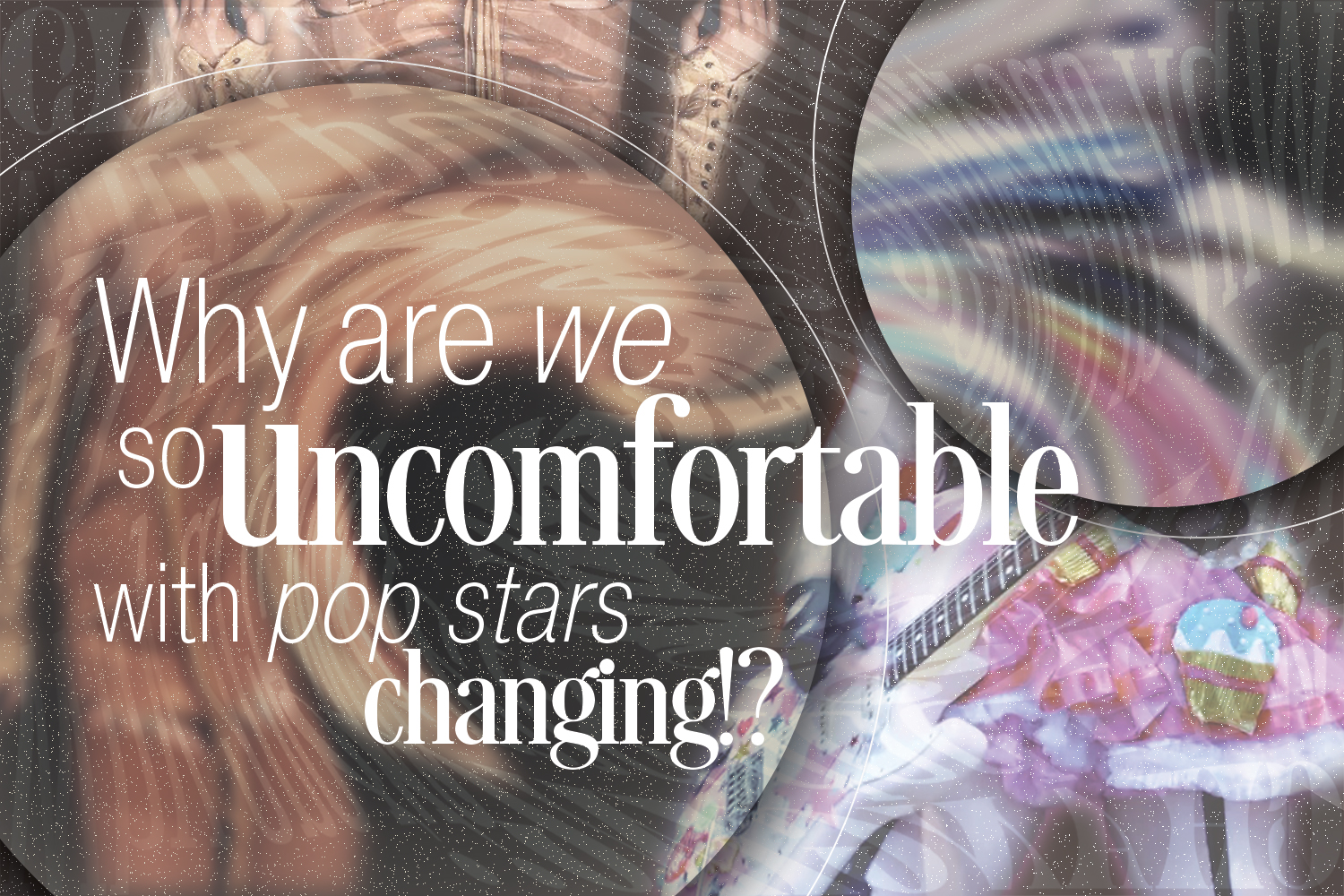I try to absorb as much knowledge about pop culture as possible, which often carries conspiracy theories or other absurdities that reflect others’ opinions. It’s no secret that female pop singers don’t have it easy. They are often under scrutiny for any action or decision they make. Change is hard to accept, and it pushes us out of our everyday comfort. This often provokes a negative reaction in some, because it’s hard to see someone we admire change.
Most celebrities that start out young inevitably experiment with their style, the genres of their art, and generally how they live their lives. These changes tend to irk some of their more ‘intense’ fans, sometimes to the extent of spamming their socials with hate comments, and in other extreme cases, creating conspiracy theories.
Many were quick to criticize Billie for her shift from her signature oversize outfits, which became understood as a conscious decision that the 19-year-old made to avoid being sexualized. Some condemned Billie for seemingly conforming to a beauty standard they felt she’d been fighting against throughout her career. “I did that Vogue cover, and it was a genre that we were doing the shoot for. It was an old Hollywood lingerie kind of classic thing,” she explained. It was supposed to be a specific aesthetic for a photoshoot, but it was instantly tokened as ‘Billie Eilish’s new style’. Fans drew comparisons between the old and new while giving their unsolicited advice. ‘Wow, I wish that we could have her old style back. I’m so sad that she’s just changed into this,'” Billie said, quoting some of her criticism.
An even more extreme example is Avril Lavigne. Learning about the Avril Lavigne replacement theory isn’t a “where were you when?” moment for most people, but I remember my body instantly felt a chill head to toe. In case this conspiracy theory hasn’t taken your brain hostage, here’s the rundown. In 2011, a Brazilian blog post titled “Avril Esta Morta,” was published. The theory suggested that Lavigne died by suicide in 2003 after a deep depression stemming from her grandfather’s death. However, due to her popularity at the time, a doppelgänger named Melissa Vandella was hired to replace her, who is responsible for all of Lavigne’s work after Let Go. The blog cites the evidence as the disappearance of moles and skin blemishes, changes in handwriting, a change in Avril’s nose and personal style, and a promotional photoshoot where Lavigne has the name “Melissa” written on her hand.
Needless to say, Lavigne has denied this rumor many times, but if fans were sceptical of Lavigne’s alleged changes before, the music video “Hello Kitty” could have been enough to ignite a conspiracy theory of its own. In the video, she wears a skirt covered in fabric cupcakes, yells “Kawaii!” and “Hello Kitty!” at strange intervals and eats sushi while a dubstep beat drops. This is where the motivation for the conspiracy theory starts to become more clear to me. Like the author of “Avril Esta Morta,” and the people who perpetuated the conspiracy theory, I desperately want her to remain the person who would not make this song. People are uncomfortable with a celebrity changing without their permission, especially if a celebrity happens to be a young woman. The author of “Avril Esta Morta” would rather believe the singer died rather than get a nose job, highlights, or do anything besides being a teenager.
On “…Ready For It?” the first track of her 5th album Reputation, Taylor Swift does the killing herself. “The old Taylor can’t come to the phone right now,” she says in a demented, sing-song lullaby cadence. “Why? Oh, ’cause she’s dead.” Swift knew she had to acknowledge the shift between the long, blonde curly hair Taylor strumming acoustic songs about Tim McGraw to the red lipstick-black sequin jumpsuit pop star Taylor.
We desperately wanted to keep Hilary Duff as Lizzie McGuire, so much so that she felt pressured to keep her “good girl” image far longer than necessary. She’ll probably be asked about Lizzie in interviews forever. Meanwhile, we skewered Lindsay Lohan and Miley Cyrus for growing up.
But that’s the thing: All these artists did become someone else, and they changed like all people do. Employing the doppelgänger theory is taking the cliché of saying you like an artist’s “early stuff,” to its most absurd level. Lavigne, Eilish, Duff, Swift, and so many others’ original images are so precious that we criticise rather than accept that they changed.
Words by Rhea Gupta.
Graphic by Ilisha Sharma

